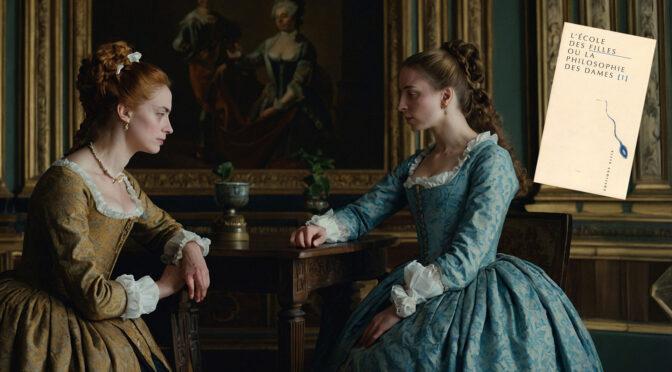The book The School of Venus, or the ladies delight (French original: L’École des filles) by Jean Millot and Michel L’Ange is an outstanding work of the early 17th century. Originally published in France in 1655, it is considered one of the first explicitly erotic works of French literature. The book was published anonymously, typical for writings of this kind at the time, as they challenged social and moral norms. Despite their anonymity, Millot and L’Ange were later identified as the authors.
The history of the book’s creation lies in the context of an increasingly repressive ecclesiastical morality that sought to banish eroticism and sexuality from public discussion. The School of Venus was nevertheless able to attract the attention of an educated audience because it openly addressed taboo topics such as female sexuality and sensuality. The publication met with widespread resistance and led to bans and censorship, which in turn promoted its spread in illegal circles. Despite the backlash, the book is now considered a milestone in erotic literature and an early example of how literature can push the boundaries of social acceptance.
Content
The content of The School of Venus, or the ladies delight revolves around a dialogue between two women – the younger, innocent Francesine and the older, more experienced Catherine. Catherine introduces Francesine to the secrets of love and sexuality and offers her a direct and blunt education in the matters of desire and lust. The book is a kind of guide to female sexuality, presented through the intimate exchange between the two protagonists.
The dialogic form allows the authors to explore different points of view and create a space for sexual education that was almost nonexistent in the 17th century. The protagonists openly discuss topics such as physical desire, lust, the act of love, and the relationship between men and women. The female perspective is clearly in the foreground, which was revolutionary at the time.
Technique and style of Millot and L’Ange
The technique used by Millot and L’Ange in The School of Venus, or the ladies delight is that of erotic dialog, a method that uses intimate conversation as a medium for knowledge and education. Through direct exchange between the characters, not only is knowledge about sexuality imparted, but social and moral criticism is also subtly interwoven.
The style is deliberately provocative yet playful, keeping sensuality at the forefront. At the same time, the traditional image of women as passive objects in love is challenged – through Catherine, the woman is portrayed as a knowing and acting agent. Millot and L’Ange also work with vivid descriptions and a descriptive visual language that makes the action tangible in a plastic and sensual way. These stylistic choices allow the reader to immerse themselves in the emotional and physical experience of the characters.
Lessons for creative writing students
For creative writing students, The School of Venus, or the ladies delight offers many valuable lessons. For one thing, it shows how powerful the dialogue form can be for exploring topics immediately and profoundly. The art of dialogue as applied in this book leaves room for subtext and invites the reader to play an active role in the process of interpretation. Students can learn through reading how to build conflict and development through conversations between characters organically.
Furthermore, the book shows how to address controversial or sensitive topics without sugarcoating or trivializing them. It teaches that honesty and directness, even in areas considered taboo, can be enriching in a literary sense. In today’s world, where issues of sexual identity and gender are widely addressed in literature, these techniques can be used to address difficult topics in a modern way.
Overall, The School of Venus, or the ladies delight is an example of the power of language to challenge social norms and open up new perspectives on human relationships. Through this work, students can learn how to push their own creative boundaries while also dealing with intimate topics in a sensitive and respectful way.


